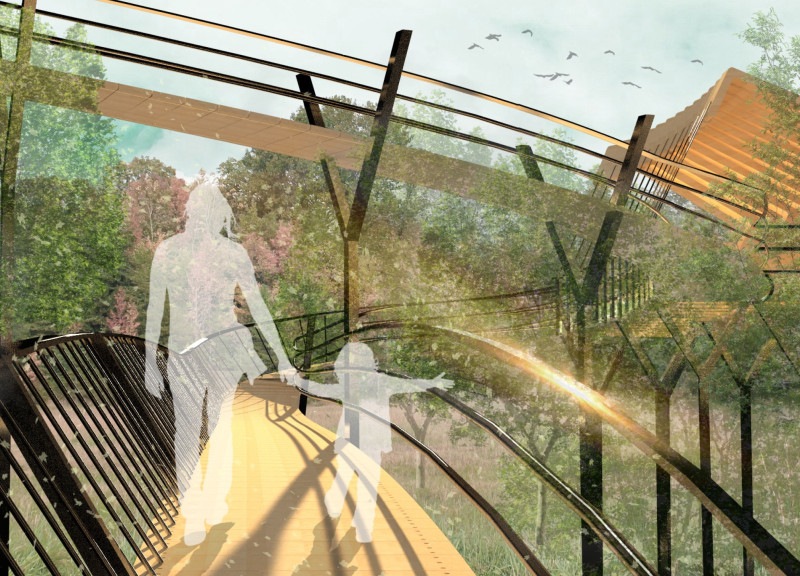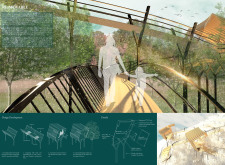5 key facts about this project
The architecture of the project is defined by its innovative use of space and materiality. The façade, characterized by [describe specific elements such as unique shapes, textures, or materials], reflects the surrounding environment while making a statement about the project's purpose. Large windows and open layouts encourage natural light to penetrate the interior, enhancing the overall ambiance and contributing to energy efficiency. The use of local materials further roots the building in its geographical context, promoting sustainability and environmental harmony.
In exploring the design’s key components, one can observe the deliberate layout of functional areas, which cater to [mention distinct spaces such as communal areas, private zones, or service functions]. These spaces are designed to promote interaction among users, fostering a sense of belonging and engagement. Each element of the design, from the placement of communal outdoor spaces to the organization of private quarters, has been thoughtfully considered to optimize user experience.
Unique design approaches are evident throughout the project. The integration of green spaces, both within and around the structure, enhances biodiversity and provides a natural retreat for inhabitants. Rooftop gardens and rainwater harvesting systems exemplify a commitment to sustainable practices, marrying aesthetics with environmental responsibility. Additionally, innovative technologies have been incorporated into the building systems, facilitating energy efficiency and improving the quality of life for residents.
Landscaping plays an essential role in complementing the architectural design. Outdoor areas are not merely adjuncts to the building but are integral to its identity, encouraging interaction and utilization. The design creates a cohesive relationship between indoor and outdoor spaces, facilitating a fluid movement that enhances the overall experience of the architecture.
The project also stands out for its emphasis on community engagement. The design includes spaces that invite public access and interaction, promoting activities that bring together diverse groups of people. This not only enhances social cohesion but also reinforces the project's connection to its local environment and culture.
For those interested in a deeper exploration of the architectural intentions and intricacies of this project, reviewing elements such as architectural plans, architectural sections, architectural designs, and specific architectural ideas will provide valuable insights. Engaging with these aspects will offer a more comprehensive understanding of how this project achieves its goals while addressing contemporary architectural challenges. The design exemplifies a commitment to thoughtful architecture that resonates with both its users and the surrounding community.























